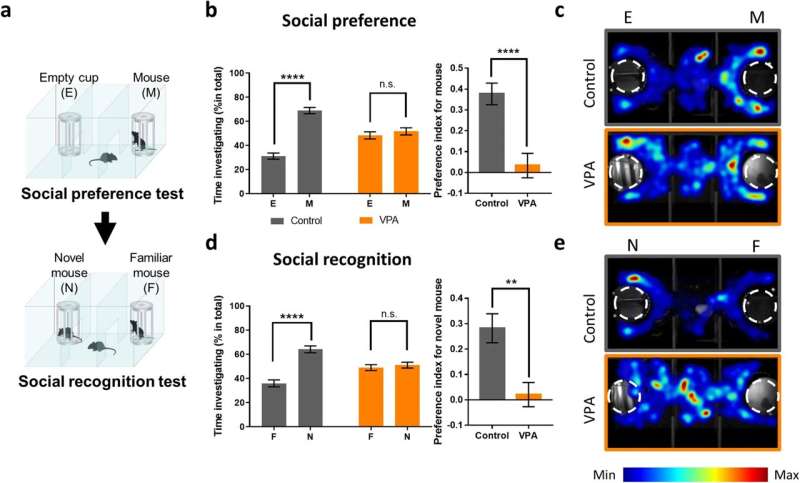This article has been reviewed according to Science X's editorial process and policies. Editors have highlighted the following attributes while ensuring the content's credibility:
fact-checked
proofread
The hidden connection between adverse drug reactions and autism spectrum disorder

A research team led by Professor Minsik Kim from the Department of New Biology at DGIST has identified the environmental factors affecting the occurrence mechanism of autism spectrum disorder through a joint study conducted along with the research teams led by Professor Yongsuk Lee at Seoul National University, Professor Junyong Ahn at Korea University, and Chanyeong Shin at Konkuk University.
Autism spectrum disorder is a neurodevelopmental disorder that typically occurs in early childhood, in which behavioral patterns, interests, and activity range are restricted and repeated due to the inability to perform normal social communications and interactions. According to certain studies, 1 out of every 50 to 60 children has a spectrum disorder, making them fairly common.
Autism spectrum disorder is known to be caused by genetic factors as well as various environmental factors such as severe infection or exposure to specific types of drugs during pregnancy.
Meanwhile, a previous study conducted by the research team of Professor Chan-yeong Shin at Konkuk University discovered that valproate may be potentially related to autism spectrum disorder since it may affect the brain development of a fetus when used during pregnancy. However, the development of therapeutic drugs has faced challenges due to a lack of research on the molecular target.
Thus, the research team of Professor Minsik Kim performed a multi-omics analysis with Professor Ahn's research team at Korea University using the mouse model treated with valproate developed by Professor Shin's research team. The results showed that expression of the Rnf146 gene, which is known to affect autism spectrum disorder, increased in the prefrontal lobe of the autism mouse model due to an adverse reaction to valproate.
Furthermore, autistic behavioral patterns were observed using the Rnf146 gene expression model in a joint effort with Professor Lee's research team at the College of Medicine of Seoul National University. It was discovered that the balance between excitatory and inhibitory neurotransmitters was disturbed in the frontal lobe of the mouse model.
Professor Lee of Seoul National University said, "Since this phenomenon is commonly observed in other autistic models, this research significantly contributes to identifying the common cause of autism."
The findings of this study are expected to help further understand the mechanism related to autism spectrum disorder, and even contribute to advancing early detection and treatment methods for autism spectrum disorder.
Professor Kim said, "We will continue our research on various developmental disorder models using multi-omics analysis through joint studies with other institutions and carry out comprehensive research on model organisms so as to identify the core network of autism spectrum disorder and discover treatment targets."
Professor Shin of Konkuk University added, "The research results are expected to become the foundation of future research on the possibility of environmental pollution causing autism and the related mechanisms."
Professor Ahn of Korea University stated, "In particular, the multi-omics technology is expected to be widely utilized in discovering a new molecular network in the brain development process and finding critical regulatory genes of various autistic models."
The findings were published in Experimental & Molecular Medicine.
More information: Gaeun Park et al, Dysregulation of the Wnt/β-catenin signaling pathway via Rnf146 upregulation in a VPA-induced mouse model of autism spectrum disorder, Experimental & Molecular Medicine (2023). DOI: 10.1038/s12276-023-01065-2



















